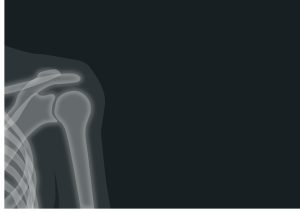As a Chiropractor, my health is an important part of my practice. I try to “live my brand” and do not recommend things to my clients that I would not be willing to do for myself. That being said, I am incredibly human. I have health challenges. I do not always remember to take my supplements. Sometimes, I eat dessert- in fact, I am writing this in a Starbucks where I am treating myself to a Frappuccino. Recently, thanks to Facebook and my wardrobe, I have come to the realization that my health has drastically changed over the past 1.5-2 years (for the better).
About 2 years ago, I became aware that I was not taking care of myself the way I should be. I have food allergies and sensitivities, and while I had cut quite a bit of them out of my diet, I was desperately clinging on to dairy and rice. At a Standard Process seminar, I made the decision to take my health into my own hands and address how my food sensitivities have impacted me.
2 years ago, I was battling depression, my weight, acne, sleep, and the list could go on. I was also working out regularly, had just finished my first triathlon, working on my spiritual well being, sleeping at least 7.5 hours per night, and getting adjusted regularly. Most people looked at me and called me healthy- but I was far from it.
I was faking it and hoping to make it. When each week ended, I spent the weekends in my pajamas sleeping too much and always tired. I would find myself crying over the smallest things. I was always feeling behind and having panic attacks regularly.
It was time for a change.
The past 2 years have been a quite a journey. I started by cleaning up my diet further- finally giving up my beloved dairy and rice. Within weeks, I was sleeping more deeply. Within months, my skin was clearer. Soon, my clothes fit better. Slowly, I was climbing out of the hole I had dug myself into during grad school and my first years in practice.
I started to really love who I am again. I started to feel like the fun and upbeat person I pretended to be for years. I scaled my workouts back to yoga, swimming, and weight training to allow my body time to heal and balance without as much repetitive stress. I budgeted time for relaxation and recreational reading.
Then, just over a year ago, my husband and I took a month and a half off to visit Europe and move out to Seattle from our first real home together in the Detroit area. The total reset that this allowed for my emotions was unreal and I truly felt in control of my emotions for the first time since puberty.
All told, this was almost a year long process.
The best part was that even moving across the country, finding a place to live, starting a new practice from scratch, dancing this dream awake, didn’t shake my cool. In the year that we have been in Seattle, I continue to be healthier, I can hike and run again, even completing my first half marathon this past June.
Looking at pictures of myself now, the change in my health really hits home. I look happy. I feel healthy. I am significantly more fit. What’s funny, though, is that pesky scale. You know the one. The bathroom scale. Over these past 2 years, it has not budged more than 5-10 pounds in either direction. In fact, during my most unhealthy years it was both at its highest and lowest weight. As I have worked to recapture my wellness and love my body, I have settled somewhere in between- even though my dress size is smaller.
Here’s the thing. And it is a big thing. Something that took me a long time to learn and something that I continue to learn each day. Health is not any one thing. Some of the people who look the healthiest are not well on the inside. Like me, they battle depression or anxiety.
Health is not merely the absence of disease or pain. Health is the constant pursuit of joy in your body and in your soul. It is ever changing. It is not measured on the scale, nor is it truly quantifiable. “Healthy” me is going to be different from “healthy” you. You can be stick thin or curvy and be healthy or unhealthy. It is important to work with health care providers that are focused on wellness and to build your tribe around you that can support your transformation. Find someone to assess you and listen to you. Health is a discussion.
My story of the past 2 years is in no way unique. But. I hope you were inspired in some way to assess your own health.
Start the conversation.
Take those first steps toward your best self.










